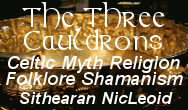My morning coffee ritual is basically a sumbel, since I make toasts. But after each toast, I listen to see if the gods have any messages for me.I toast Odin, Honir, Lodhur Who Is Loki, and Thor. In the afternoon, I toast the goddesses with tea. I might make a toast with a more traditional beverage from time to time as well. At any time, whether I'm specially listening or not, I might receive a message from my gods. This has been happening since I wrote the unpublishable novel Some Say Fire, and in the process of writing learned to hear the gods, as I detailed in some previous posts. Here on Gnosis Diary, I talk about my gnosis a lot, unsurprisingly. Here are some of my recent gnosis experiences.
My gods very rarely tell me not to do something. As I mentioned years ago, when I was writing the post that eventually became Good Knowledge, Bad Teacher, my computer repeatedly glitched until I took it for a sign and changed my focus. After that I asked the gods to please just tell me when they want me to do or not do something. A few years ago I blogged about when Loki told me not to go spread anarchy in the desert, and I found out later that night someone had stolen the idol of Sekhmet from her temple and the angry goddess was walking the desert right then. (Eventually the temple got a new statue. But the temple was never the same after that and there was a schism in the local pagan community that I blogged about in my post Rebuttal of TERF Values.)
...






















